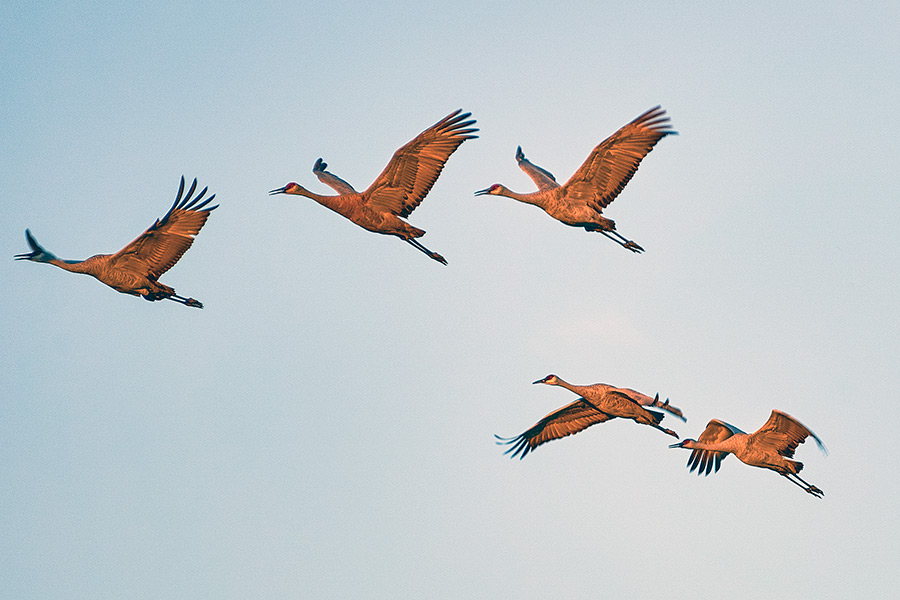A slate of conservation projects are nearing completion or recently came to fruition in the Flathead Valley, underscoring the importance of private donations and a federal program that funds a suite of conservation projects, including land acquisition and grants to state and local entities for everything from conservation easements to municipal parks.
Recently, the Land and Water Conservation Fund helped complete the next phase of a 13,400-acre conservation easement northwest of Whitefish Lake, providing $2 million for the final piece of the multi-phased Whitefish Lake Watershed Project, which helps protect wildlife, promote timber production, and allow public access for hunting, fishing, hiking, mountain biking, and other outdoor pursuits.
The conservation and recreation community has praised the easement because it protects critical fish and wildlife habitat and provides continued public access for outdoor recreation, while also securing the city of Whitefish’s water supply, 20 percent of which is drawn from Whitefish Lake.
Coupled with the nearby Haskill Basin project on land owned by F.H. Stoltze Land and Lumber Co. — the source of the city’s remaining water supply — the Whitefish Lake Conservation Project affords the final safeguard from threats of development on land owned by the Seattle-based Weyerhaeuser Company.
Last year, the Trust for Public Land (TPL) acquired the entire project area from Weyerhaeuser. Meanwhile, Montana Fish, Wildlife and Parks is set to purchase the Lazy Creek Conservation Easement on 16 sections, or about 10,218 acres, of the property in two phases with a combination of federal and state funding.
The Montana Department of Natural Resources and Conservation would purchase the underlying fee ownership from TPL once the conservation easement is in place. The Bonneville Power Administration (BPA) would provide funding for the purchase of the remaining five sections, or roughly 3,180 acres, in the Swift Creek watershed.
The U.S. Fish and Wildlife Service awarded the grant through the Land and Water Conservation Fund, which has enjoyed widespread bipartisan support.
But authorization for LWCF expires at the end of fiscal year 2018, and the Trump administration is reviewing options for reauthorizing it.
While the LWCF, which is funded through offshore oil royalties, can legally receive up to $900 million in appropriations, it has only received the full amount twice in its more than a half-century in existence. Last year’s budget deal funded LWCF at $425 million. But the current administration’s proposed FY19 budget would pare LWCF to roughly $8 million.
The fate of LWCF was a major topic of conversation earlier this month when lawmakers grilled former Montana congressman, Whitefish native and Interior Secretary Ryan Zinke about the proposed budget.
“I’m disappointed to see the significant reduction in proposed funding for LWCF,” U.S. Republican Sen. Steve Daines said. “I am encouraged by your budget mentioning the need for reauthorize the program. I’m optimistic this committee and Congress as a whole will maintain our commitment to that program as it’s one that has robust bipartisan support.”
Zinke said he’s long supported the LWCF, but that “it’s hard to justify taking in more land” as he works to address the Interior Department’s maintenance backlog.
“In order for people to know how important LWCF is, we have got to have an advocate in this administration,” Tester told Zinke during the hearing, asking him to defend the proposal to dramatically cut the program.
“What is the justification for funding LWCF at only $8.1 million?” Tester said. “The truth is that these ecosystems won’t be around in 20 years.”
Back in the Flathead, Paul Travis, executive director of the Flathead Land Trust, finalized two major conservation projects in the span of a week, putting the finishing touches on a project that conserves 400 acres of critical sandhill crane habitat in West Valley, and another that conserves 45 acres of land vital to migratory waterfowl.
“When it rains it pours,” Travis said of securing the easements, which the Land Trust has worked on for years.
The sprawling 400-acre West Valley Wetlands area north of Kalispell helps to conserve a section of farmland that supports 144 species of bird, with special focus on sandhill cranes. The property includes a unique pothole wetland used by tens of thousands of migratory waterfowl and shorebirds, and hundreds of sandhill cranes each year.
The easement will remain in private ownership managed by the landowner, but would protect the property in perpetuity from becoming a residential subdivision or commercially developed. It would instead stay in agriculture with limited residential use.
According to supporters, the project is especially critical for sandhill cranes as it protects part of the only known staging area in the Flathead Valley used by as many as 400 cranes to rest and refuel for up to two months on their fall migration from as far north as the Arctic to as far south as Mexico.
A bird-viewing area for the public will also be created as an educational site for local schools. It is situated about two miles north of Kalispell near the Stillwater River, and is bordered to the west by West Valley Drive and to the east by West Springcreek Road.
The conservation project will also protect a family-farming legacy in West Valley by keeping the farmland intact and allow for future agricultural production.
On the North Shore of Flathead Lake, another new conservation easement protects a patch of land owned by David and Linda Kurfess, securing a refuge not only for tundra swans and pintails that pass through Northwest Montana every March, but also 229 other species of birds that make the area their home year-round.
The Flathead Land Trust purchased the easement for an undisclosed amount. In a press release, the organization stated, “The project helps protect a rare gem unmatched anywhere else in the western United States.”
This project is part of a larger Land Trust effort, the Flathead River to Lake Initiative, to protect land tracts along the region’s waterways. This includes 542 acres on Flathead Lake’s North Shore, and 5,000 acres along the Flathead River.
